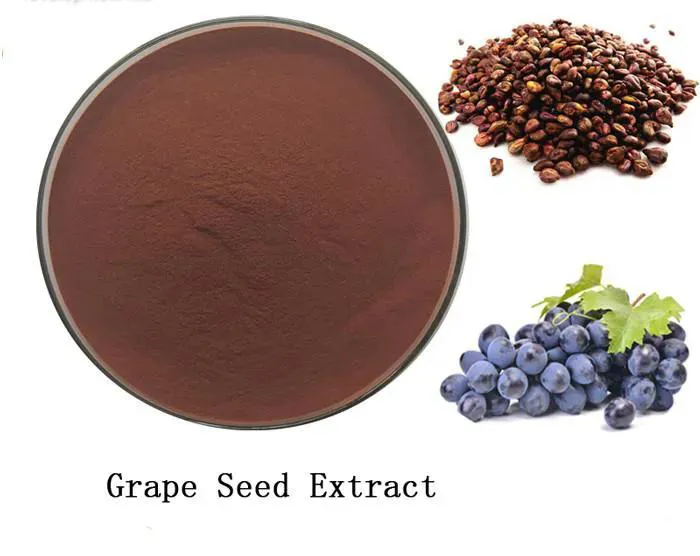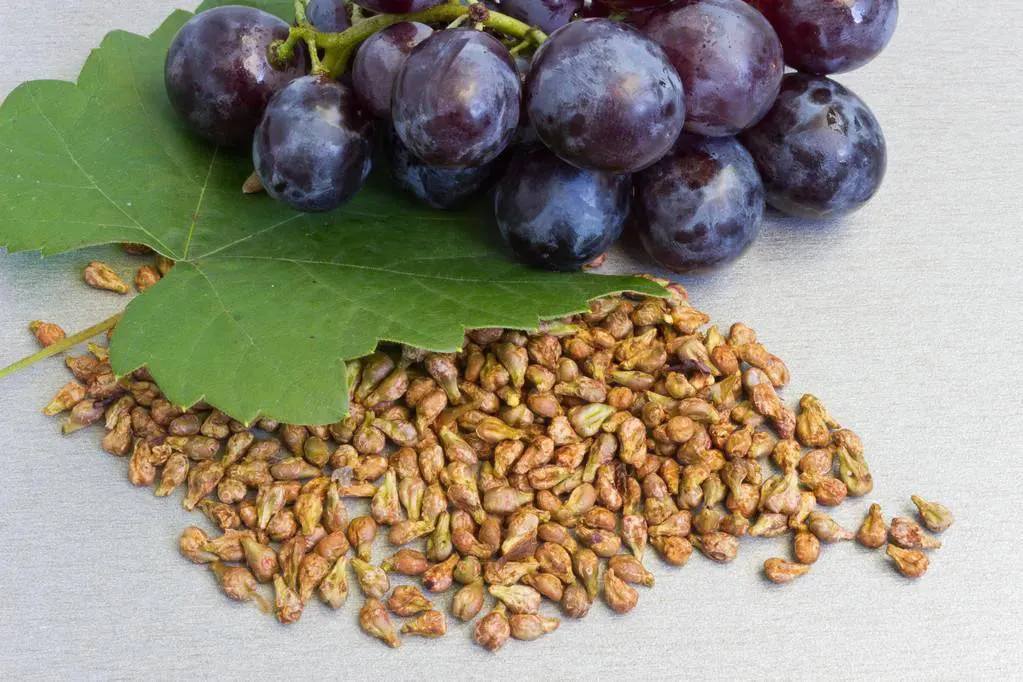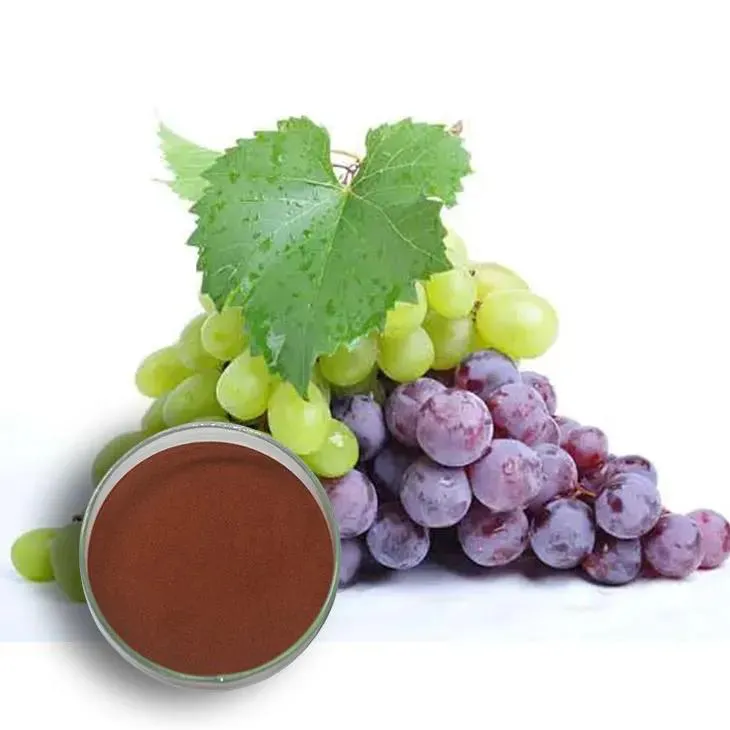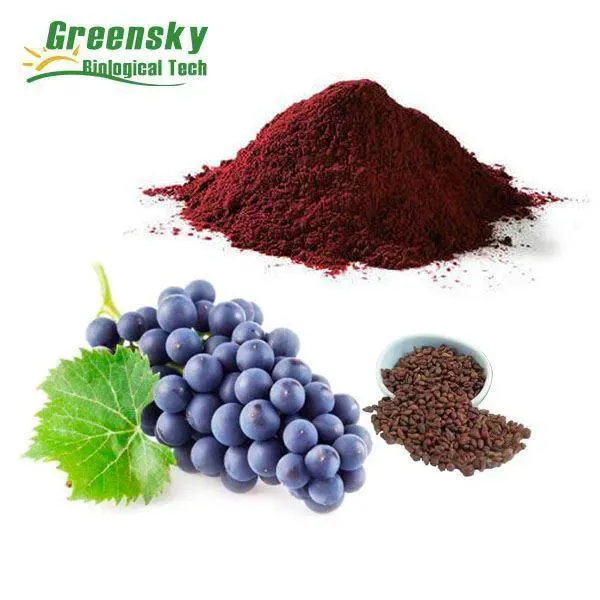- 0086-571-85302990
- sales@greenskybio.com
Supercharge Your Wellness: A Guide to Making Grape Seed Extract at Home
2024-07-30

1. Introduction
Grape Seed Extract has gained significant popularity in recent years due to its numerous health benefits. It is rich in antioxidants, which play a crucial role in protecting the body from various diseases and promoting overall well - being. While commercial Grape Seed Extract products are readily available, making it at home can be a rewarding and cost - effective alternative. This article will guide you through the process of making Grape Seed Extract at home, from understanding its health benefits to the step - by - step preparation.

2. Health Benefits of Grape Seed Extract
2.1. Antioxidant Properties
Grape seed extract is a potent source of antioxidants, such as proanthocyanidins. These antioxidants help in neutralizing free radicals in the body. Free radicals are unstable molecules that can cause damage to cells, leading to various health problems, including heart disease, cancer, and aging - related issues. By consuming grape seed extract, you can boost your body's antioxidant defenses and reduce the risk of these diseases.
2.2. Heart HealthStudies have shown that grape seed extract may have a positive impact on heart health. It can help in reducing blood pressure, improving blood lipid profiles (such as reducing LDL cholesterol and increasing HDL cholesterol), and preventing the formation of blood clots. These effects contribute to a lower risk of heart attacks and strokes.
2.3. Skin HealthFor skin health, grape seed extract is a valuable ingredient. Its antioxidant properties help in protecting the skin from damage caused by UV radiation and environmental pollutants. It can also promote collagen production, which is essential for maintaining the skin's elasticity and firmness. This may result in a reduction in wrinkles and an improvement in overall skin texture.
2.4. Anti - Inflammatory EffectsThe anti - inflammatory properties of grape seed extract can be beneficial for various inflammatory conditions. It may help in reducing inflammation in the joints, which can be helpful for people with arthritis. Additionally, it can also reduce inflammation in the body's internal organs, potentially improving overall health.

3. Necessary Ingredients
3.1. Grape Seeds
The most crucial ingredient for making grape seed extract is, of course, grape seeds. You can obtain grape seeds from grapes that you consume at home. It is advisable to use organic grapes to avoid any potential pesticide residues. When collecting the seeds, make sure they are clean and free from any pulp or debris.
3.2. SolventA solvent is needed to extract the beneficial compounds from the grape seeds. One of the most common solvents used is vodka. Vodka is a good choice because it has a relatively high alcohol content (usually around 40% - 50%), which helps in dissolving the active ingredients in the grape seeds. However, if you prefer not to use alcohol, you can also use glycerin as an alternative solvent. Glycerin - based extracts are non - alcoholic and are suitable for those who cannot consume alcohol.

4. Step - by - Step Process of Making Grape Seed Extract
4.1. Preparation of Grape Seeds
- Start by collecting grape seeds from fresh grapes. Wash the grapes thoroughly before removing the seeds. You can cut the grapes in half and gently squeeze out the seeds.
- Once you have the seeds, rinse them under cold water to remove any remaining pulp or juice. Spread the seeds on a clean towel and let them air - dry completely. This may take a few hours or overnight.
- After the seeds are dry, place them in a coffee grinder or a mortar and pestle. Grind the seeds into a fine powder. If using a coffee grinder, pulse the grinder a few times to avoid overheating the seeds, as excessive heat can damage the beneficial compounds.
- If using vodka as a solvent:
- Place the ground grape seeds in a clean, glass jar. Add enough vodka to cover the seeds completely. The ratio of grape seeds to vodka can be approximately 1:2 (one part grape seeds to two parts vodka).
- Seal the jar tightly and shake it well to ensure that the seeds are evenly distributed in the vodka. Place the jar in a cool, dark place, such as a pantry or a cupboard.
- If using glycerin as a solvent:
- Follow the same process as with vodka, but use glycerin instead. Keep in mind that glycerin - based extracts may take longer to extract the beneficial compounds compared to alcohol - based extracts.
- Regardless of the solvent used, shake the jar every day for about 2 - 3 weeks. This helps in maximizing the extraction of the beneficial compounds from the grape seeds into the solvent.
- After 2 - 3 weeks, it's time to filter the extract. Place a coffee filter or a fine - mesh sieve over a clean glass container. Slowly pour the contents of the jar (seeds and solvent) into the filter. The liquid that passes through the filter is your grape seed extract.
- You may need to let the extract drip through the filter for a while. If the extract is still cloudy, you can repeat the filtering process using a new filter.

5. Tips for Optimal Results
5.1. Quality of Ingredients
As mentioned earlier, using high - quality ingredients is essential. Opt for organic grapes to ensure that the grape seeds are free from pesticides. Also, use a good - quality vodka or glycerin as the solvent. Cheap or low - quality solvents may not extract the beneficial compounds effectively.
5.2. Storage ConditionsStore your homemade grape seed extract in a cool, dark place. Exposure to light and heat can degrade the active ingredients in the extract. A dark glass bottle is a good choice for storage. Also, make sure the bottle is sealed tightly to prevent air from entering, which can also cause the extract to deteriorate.
5.3. Dosage and UsageWhen using grape seed extract, it's important to follow the appropriate dosage. While there is no one - size - fits - all dosage, a general guideline is to start with a small amount, such as 50 - 100 mg per day, and gradually increase if needed. You can take the extract orally, either directly or diluted in a small amount of water or juice. However, if you have any underlying health conditions or are taking medications, it's advisable to consult a healthcare provider before starting to use grape seed extract.
6. Conclusion
Making grape seed extract at home can be a simple and enjoyable process. By understanding the health benefits, using the right ingredients, and following the proper steps, you can create your own high - quality grape seed extract. This natural supplement can be a great addition to your daily wellness routine, helping you supercharge your well - being. However, it's important to remember that while grape seed extract has many potential health benefits, it should not replace a balanced diet and a healthy lifestyle.
FAQ:
What are the health benefits of grape seed extract?
Grape seed extract is rich in antioxidants, such as proanthocyanidins. These antioxidants can help fight against free radicals in the body, which may reduce the risk of chronic diseases like heart disease and cancer. It also has anti - inflammatory properties, which can be beneficial for joint health and may improve skin health by promoting collagen production.
What ingredients are needed to make grape seed extract at home?
To make grape seed extract at home, you will need grape seeds (obviously), a high - quality carrier oil such as olive oil, and some basic kitchen tools like a blender or a mortar and pestle. You may also need a fine - mesh strainer or cheesecloth for straining.
What is the step - by - step process of making grape seed extract at home?
First, dry the grape seeds thoroughly. Then, grind the dried grape seeds into a fine powder using a blender or mortar and pestle. Next, mix the powdered grape seeds with the carrier oil in a ratio that suits you, for example, 1 part grape seed powder to 3 parts oil. Let the mixture sit in a cool, dark place for a few weeks, shaking it occasionally. After that, strain the mixture through a fine - mesh strainer or cheesecloth to separate the liquid extract from the solids.
How can I ensure optimal results when making grape seed extract at home?
To ensure optimal results, start with high - quality grape seeds, preferably from organic grapes. Make sure the seeds are completely dry before grinding. Keep the mixture in a cool and dark place during the extraction process to protect the active compounds. Also, use a clean and sterile container for the extraction.
Can anyone make grape seed extract at home?
Most people can make grape seed extract at home as long as they have access to grape seeds and the basic kitchen tools. However, if you have any allergies to grapes or related substances, or if you are unsure about the safety of making your own extract, it is advisable to consult a healthcare professional before starting.
Related literature
- The Health Benefits of Grape Seed Extract: A Comprehensive Review"
- "Making Herbal Extracts at Home: A Guide with Grape Seed Extract as an Example"
- "Grape Seed Extract: From Grape to Wellness - An In - Depth Look"
- ▶ Hesperidin
- ▶ citrus bioflavonoids
- ▶ plant extract
- ▶ lycopene
- ▶ Diosmin
- ▶ Grape seed extract
- ▶ Sea buckthorn Juice Powder
- ▶ Beetroot powder
- ▶ Hops Extract
- ▶ Artichoke Extract
- ▶ Reishi mushroom extract
- ▶ Astaxanthin
- ▶ Green Tea Extract
- ▶ Curcumin Extract
- ▶ Horse Chestnut Extract
- ▶ Other Problems
- ▶ Boswellia Serrata Extract
- ▶ Resveratrol Extract
- ▶ Marigold Extract
- ▶ Grape Leaf Extract
- ▶ blog3
- ▶ blog4
- ▶ blog5
-
Grape Leaf Extract
2024-07-30
-
Rosemary extract
2024-07-30
-
Mango flavored powder
2024-07-30
-
Kelp Extract Powder
2024-07-30
-
Ginseng Root Extract
2024-07-30
-
Avocado Extract Powder
2024-07-30
-
Thunder God Vine Extract
2024-07-30
-
Eyebright Extract
2024-07-30
-
Carrageenan Extract Powder
2024-07-30
-
Marigold Extract
2024-07-30





















